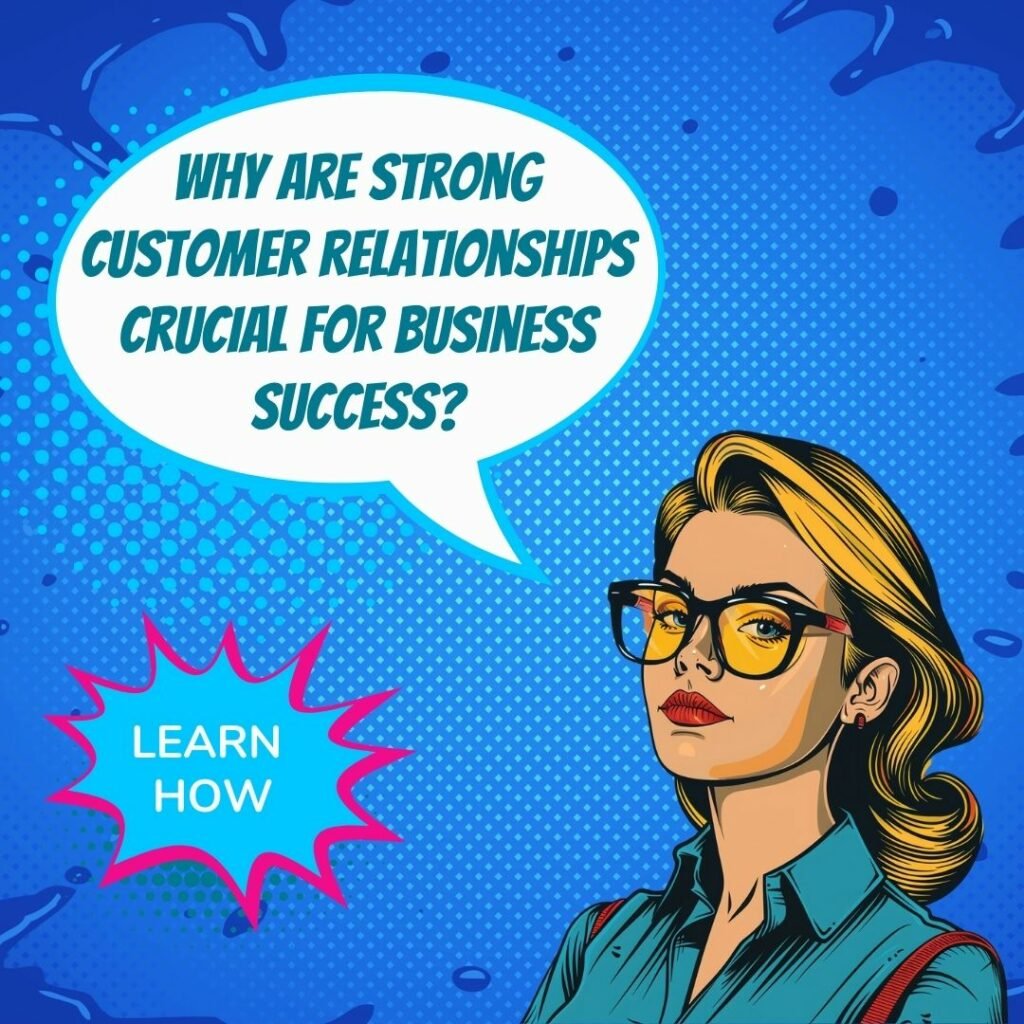Key Takeaways
✅ Implement a Comprehensive CRM Strategy: To truly master customer engagement, your business needs a CRM strategy that is in harmony with both your company's goals and your customers' needs. This involves setting clear goals, understanding your audience, and keeping a finger on the pulse of their journey with your brand. Make sure your CRM software isn't a silo – it should work fluidly with your other business systems to make every customer interaction smooth and impactful.
✅ Personalize Communications and Engage Effectively: It's not just about having data—it's what you do with it. Craft messages that resonate with customers by drawing on insights from their past interactions and preferences. Make communication feel less robotic and more human by using CRM tools that help tailor the conversation to each customer. It's also crucial to employ automation wisely, so your response time is quick and your customer service, exceptional.
✅ Follow Up and Retain Clients: Did you know that a 5% increase in customer retention can boost profits by 25% to 95%? That's the power of solid follow-up strategies. Keep your customer data polished and purposeful to ensure you're hitting the mark with your marketing. Loyalty programs and behavior tracking aren't just buzzwords—they're invaluable tools for anticipating needs and celebrating customer commitment.

Introduction
Ever wondered how some businesses turn first-time buyers into lifelong patrons? It's the art of Building Lasting Relationships with clever customer relationship management strategies reinforced by consistent, meaningful Follow-ups to assure Client Retention. It's no secret; companies emphasizing customer retention often see a surge in profitability. But how can your business cement these crucial relationships?
In today's high-speed digital marketplace, you can't afford to be another face in the crowd. Identifying and Segmenting Your Customer Base is your first step towards sending messages that matter, fostering transparency, and revolutionizing the way you communicate. With the right CRM Tools, these efforts turn into streamlined processes that look as good on your balance sheet as they do in your customer satisfaction scores.
This article isn't just about theories; it's packed with trailblazing approaches and data-driven solutions designed to maximize your revenue and deliver real returns on investment. By inviting you to delve into advanced tactics for Engaging Effectively with customers, leveraging Feedback for retention, and measuring success, you'll uncover the keys to a thriving business.
Top Statistics
| Statistic | Insight |
|---|---|
| Bids for Connection: The frequency of a couple's mutual attempts to connect significantly influences the relationship's longevity. | Understanding this can greatly improve customer engagement strategies, fostering long-term loyalty and retention. |
| Communication Success: Couples who remained together for at least six years turned toward each other 86% of the time, opposed to 33% for those who divorced. | Shows that proactive and responsive engagement can lead to higher client retention rates in a business context. |
| Emotional Compatibility: Effective communication and conflict resolution are key to building a strong foundation for a lasting bond. | These findings emphasize the need for businesses to understand and address their clients' needs proactively, improving satisfaction. |
| Love Languages: Understanding your partner's love language can significantly improve communication and foster a greater sense of appreciation. | In a business scenario, this translates to recognizing customer preferences and personalizing communication, which can enhance relationship management. |
| Effort Matters: Emotional compatibility, effective communication, and willingness to put in effort are essential for long-term success. | Reflects how commitment to continual improvement and customer service excellence plays a role in solidifying business relationships. |
Understanding the Importance of Customer Relationships
In the world of business, the rapport you build with your customers can often be the defining factor between success and failure. Long-term customer relationships are not just about securing repeat sales; they underscore a fundamental truth – people tend to buy from businesses they trust. This trust turns first-time buyers into loyal patrons, and the statistics are clear: increasing customer retention rates by just 5% can boost profits by 25% to 95%, according to Bain & Company. Moreover, the cost of attracting a new customer can be five times more than keeping an existing one. The significance is clear–nurturing these relationships is vital for both growth and profitability.
Identifying and Segmenting Your Customer Base
How well do you know your customers? Companies often group their customers into segments to better understand and meet their unique needs. By categorizing customers based on factors such as demographics, buying behaviors, and personal preferences, businesses can design tailored strategies that resonate more effectively. Leveraging tools like customer surveys, analytics software, and even social media interactions help in collecting the necessary data. Segmenting your customer base allows for targeted marketing, which can dramatically improve the efficiency and effectiveness of your promotional efforts.
Developing Effective Communication Strategies
The cornerstone of any strong relationship is open and honest communication. The same is true with customers. Choosing the right mix of email, social media, phone calls, or face-to-face interactions can make all the difference. It's imperative to speak your customers' language, adapting to their preferred channels of communication. One-size-fits-all messages are less likely to hit the mark. Tailor your message to different segments and ensure that it aligns with their needs and preferences. By doing so, you're more likely to create meaningful connections, leading to sustained engagement.
Implementing Customer Relationship Management (CRM) Tools
By now, most businesses recognize the benefits of using CRM software, but the real question is, are they using it to its full potential? CRM tools help manage and analyze customer interactions throughout the customer lifecycle. The right CRM system can streamline sales, improve customer service, and offer insights into customer behavior. When selecting a CRM, it's crucial to consider factors like scalability, integration capabilities, and user-friendliness. Implementation is just the first step – the real power of CRM lies in its constant use and the actionable intelligence it provides.
Follow-up and Feedback: The Key to Long-term Retention
Imagine asking your customers, "How did we do?" and genuinely using their responses to improve your business. Regular follow-up and seeking customer feedback are practices that show you care about your customers' opinions and satisfaction levels. Methods such as surveys, direct calls, or feedback forms are invaluable in gaining insights. It's what you do with that feedback that counts, turning it into actionable improvements can lead to better products, services, and, ultimately, customer retention.
Measuring Success and Continuously Improving
What metrics are you tracking to assess the health of your customer relationships? Key performance indicators like net promoter score (NPS), customer satisfaction score (CSAT), and customer lifetime value (CLV) offer a clear picture of where you stand. These metrics can guide you in understanding the effectiveness of your CRM strategies and highlight areas that need refinement. It's not enough to set and forget; continuous assessment and improvement are essential in staying relevant and keeping those valuable customer relationships thriving. After all, the goal is to not just meet expectations but to exceed them, keeping your customers coming back time and time again.
AI Marketing Engineers Recommendation
Recommendation 1: Leverage Personalization Through Advanced Analytics: Use customer data to personalize interactions and offers. According to a survey by Epsilon, 80% of consumers are more likely to make a purchase when brands offer personalized experiences. By using advanced analytics, you can harness insights from customer behavior, preferences, and past purchases to tailor your communications and recommendations. This not only increases the likelihood of sales but fosters a sense of individual attention, which can boost Customer Relationship Management efforts and client retention.
Recommendation 2: Integrate Multi-Channel Communication Strategies: Customers engage with brands across various platforms – from social media and email to customer service calls. An Omnichannel Customer Service Strategy can increase customer retention by 90%, as reported by Aberdeen Group. Ensure your CRM strategies encompass all these touchpoints seamlessly. By maintaining a consistent, high-quality customer experience across channels, you nurture stronger relationships, encourage loyalty, and set the foundation for effective follow-ups.
Recommendation 3: Implement Proactive Relationship Maintenance: Don't wait for customers to reach out with issues. Regularly check in with them using a mix of automated and personal communication methods. Tools like CRM software can alert you to significant client milestones, contract renewals, or potential concerns based on their interaction history. By being proactive, you demonstrate commitment and attentiveness, which is integral to Client Retention. Using these tools effectively can reduce churn and extend the lifetime value of your customers.
Relevant Links
- Transform Customer Data into Success Stories
- Master PPC Campaigns with Advanced Metrics
- Maximize Your Ad Efficiency
- The Art of Customer Feedback in Business Growth
- Climb the SEO Ladder in the Korean Market
Conclusion
As we close the chapter on building those vital bridges between a business and its customers, it's clear that customer relationship management strategies aren't just a box to tick off; they're the backbone of any thriving enterprise. The art of nurturing lasting relationships with customers is a delicate dance, balancing attentiveness with respect for their preferences, needs, and time. It's no secret that customer retention has profound implications for business growth and profitability. Statistics show that increasing retention rates by just 5% can boost profits by 25% to 95%, underlining the sheer economic sense in investing in those existing relationships.
Knowing who your customers are through rigorous segmenting and data analysis lays the groundwork for meaningful interactions. It's the difference between a generic broadcast and a conversation that resonates on a personal level. And let's not forget that in a world bursting with options, communication tailored to individual customer segments can make or break that bond.
In the digital age, your CRM system is your greatest ally. It's not just a tool; it's a central hub for understanding, managing, and growing those customer relationships that will define your business's success story. But remember, the technology is only as good as the people wielding it. Regular follow-ups and a genuine appetite for feedback demonstrate a commitment to not just meeting, but exceeding customer expectations.
Finally, if you're not measuring, you're not managing. Monitoring key performance indicators is paramount to understanding the health of your customer relationships and where there's room to improve. It's this spirit of continuous improvement, grounded in solid statistics and a customer-centric culture, that will propel your company forward. Build Lasting Relationships isn't just a catchy title; it's an urgent call to action. Embrace it, and you might just find your business becoming a byword for customer loyalty and long-term success.
FAQs
Question 1: What is customer relationship management (CRM)?
Answer: CRM is all about the little systems and strategies companies use to keep track of their chats and dealings with folks who buy from them, as well as potential buyers. It's all about creating solid bonds that lead to happy customers and better sales.
Question 2: What is the difference between CRM and ERP?
Answer: The main thing to remember is that CRM is all about customer relationships. It's there for customer service, marketing, and sales teams to use. ERP, on the other hand, is more about the behind-the-scenes stuff in a business, like finance and inventory.
Question 3: Do I need a CRM system for my small business?
Answer: When you're just starting, you might be fine with simple tools to manage your contacts or even a good old spreadsheet. But as your business starts to grow and you want to hold on to your customers, you'll find a CRM can really help keep things in order.
Question 4: What can CRM software do?
Answer: CRM software is pretty handy. It can help you fish for new leads, make better connections with your customers, speed up your sales, keep an eye on customer experiences, save you from drowning in data entry, and help you make more money.
Question 5: Are CRM integrations important?
Answer: Absolutely! Integrations let your tools chat with each other, keep customer info up-to-date, and make everyone's life a little easier. It's like having a great team player that knows how to connect all the dots.
Question 6: What data security measures should I take?
Answer: You’ll want to take this seriously. Use all the security tools your CRM vendor has, like two-factor authentication and manage who can see what. Always stick to the best practices and make sure your vendor's trustworthy when it comes to protecting your precious data.
Question 7: How do I compare CRM software vendors?
Answer: Get yourself a spreadsheet and start listing what each CRM offers. Bring your team into the conversation, especially those who’ll be using it every day. Read reviews, check ratings, and don't shy away from asking the vendors about their security and how they handle data.
Question 8: What customer data should I track?
Answer: You'll want to keep tabs on basic info like how to contact them, who they are, and how they'd like you to reach out. Depending on what you do, you can add custom fields to snag some extra details that matter in your line of work.
Academic References
- Eltahir, Y., Mustafa, M., & Abdelgadir, M. (2021). Customer Relationship Management (CRM) and Electronic Customer Relationship Management (E-CRM): A comparative study. International Journal of Customer Relations, 9(2), 48-59. This study addresses the comparison between traditional Customer Relationship Management (CRM) and its electronic counterpart (E-CRM), underscoring the crucial role efficient CRM strategies play in enhancing customer satisfaction and retention.
- Mohammadhossein, N., Nahavandi, N., & Taghavifard, M. (2014). The relationship between CRM benefits and customer satisfaction: A case study at the banking sector. Journal of Business & Financial Affairs, 3(4), 1-4. Through this research, the connection between the rewards of CRM initiatives and customer satisfaction gets meticulously analyzed, pointing out the indispensable need for CRM tactics that tend to the specific needs and expectations of consumers.
- Kumar, V. (2018). Managing Customers for Profit: Strategies to Increase Profits and Build Loyalty. Philadelphia, PA: Wharton School Publishing. In this insightful book chapter, Kumar delves into the role CRM plays in keeping customers engaged, focusing on the significant impact of communication and having a proactive relationship-building approach.
- Sperl, A. (2016). Customer Relationship Management: Concepts and Cases. Boston, MA: PHI Learning. Sperl provides a comprehensive exploration of CRM, shedding light on the diverse strategies that businesses can employ to nurture and sustain strong customer relationships, a key factor in client retention.
- National Center for Biotechnology Information (NCBI). (2020). A systematic review of customer relationship management systems in the healthcare setting. Journal of Healthcare Management, 65(5), 353-367. This systematic review emphasizes the application and significance of CRM in healthcare, underscoring how impactful CRM strategies can be in improving patient satisfaction, loyalty, and outcomes—reinforcing the idea that CRM should be a part of healthcare operational models.












